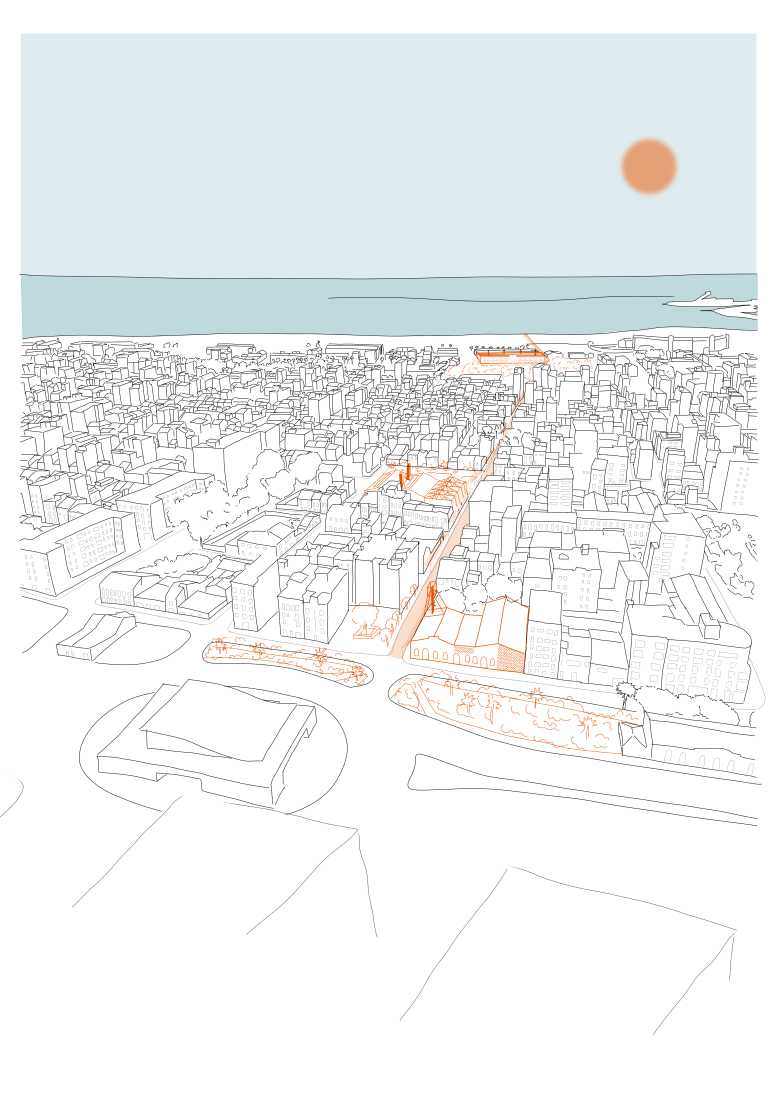Ligne de vie
Réappropriation du lien centre-ville / mer à travers la Zona Cero
2024
Auteur(s)
Ondine Bres
Enseignant(s)
Clément Carrière, Martin Gillot
Département
Transition
À Valencia, le quartier du Cabanyal se dresse entre le centre-ville et la mer. Dans ce lieu, considéré tantôt comme barrière ou opportunité de lien, un projet massif avait été pensé par la ville pour rouvrir cet accès en rasant un tiers des habitations créant ainsi la Zona Cero. Ce projet, de nos jours abandonné, a largement dégradé un quartier pourtant réputé pour son architecture singulière et son histoire riche.
Mon projet aborde la volonté de permettre aux habitants du Cabanyal et aux visiteurs de se réapproprier la Zona Cero grâce à des espaces qui répondent aux problématiques d’isolement urbain, de vacance, de climat et de préservation de la mémoire du lieu. Pour cela le projet envisage une transformation engagée de la Zona Cero depuis la gare de métro (qui relie le quartier au reste de la ville) jusqu’à la mer, un atout majeur. Cette ligne de vie sera ponctuée par de multiples interventions à différentes échelles. Celles-ci comprennent la réactivation des rues avec des solutions de gestion climatique, la réouverture des rez-de-chaussée et le développement des mobilités douces, la transformation des friches en espaces verts, et la réhabilitation de bâtiments historiques abandonnés en lieux collectifs aux programmes actifs.
In Valencia, the Cabanyal neighborhood stands between the city center and the sea. In this area, seen both as a barrier and a potential link, the city had once envisioned a massive project to reopen this access by demolishing a third of the housing, thereby creating the Zona Cero. This project, now abandoned, has significantly degraded a neighborhood renowned for its unique architecture and rich history.
My project addresses the desire to allow the residents of Cabanyal and visitors to reclaim the Zona Cero through spaces that address issues of urban isolation, vacancy, climate, and the preservation of the area’s memory.
To achieve this, the project envisions a committed transformation of the Zona Cero from the metro station (which connects the neighborhood to the rest of the city) to the sea, a major asset. This lifeline will be punctuated by multiple interventions at different scales. These include the reactivation of streets with climate management solutions, the reopening of ground floors and the development of soft mobility, the transformation of wastelands into green spaces, and the rehabilitation of abandoned historic buildings into collective spaces with active programs.



